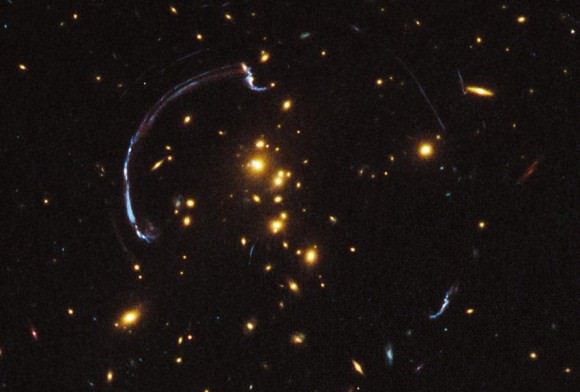

| Visitors Now: | |
| Total Visits: | |
| Total Stories: |

| Story Views | |
| Now: | |
| Last Hour: | |
| Last 24 Hours: | |
| Total: | |
Hubble Captures Giant Lensed Galaxy Arc

Thanks to the presence of a natural “zoom lens” in space, this is a close-up look at the brightest distant “magnified” galaxy in the universe known to date. Credit: NASA, ESA, J. Rigby (NASA Goddard Space Flight Center), K. Sharon (Kavli Institute for Cosmological Physics, University of Chicago), and M. Gladders and E. Wuyts (University of Chicago)
Less than a year ago, the Hubble Space Telescope’s Wide Field Camera 3 captured a very unique image – a giant lensed galaxy arc. Gravitational lensing produces a natural “zoom” to observations and this is a look at one of the brightest distant galaxies so far known. Located some 10 billion light years away, the galaxy has been magnified as a nearly 90-degree arc of light against the galaxy cluster RCS2 032727-132623 – which is only half the distance. In this unusual case, the background galaxy is over three times brighter than typically lensed galaxies… and a unique look back in time as to what a powerful star-forming galaxy looked like when the Universe was only about one third its present age. (…)
Read the rest of Hubble Captures Giant Lensed Galaxy Arc (490 words)
© tammy for Universe Today, 2012. | Permalink | No comment | Add to del.icio.us
Post tags: Early Universe, Galaxy Arc, galaxy clusters, Gravitational Lensing, Hubble Space Telescope, spectroscopy, star forming regions
Feed enhanced by Better Feed from Ozh
Source:


